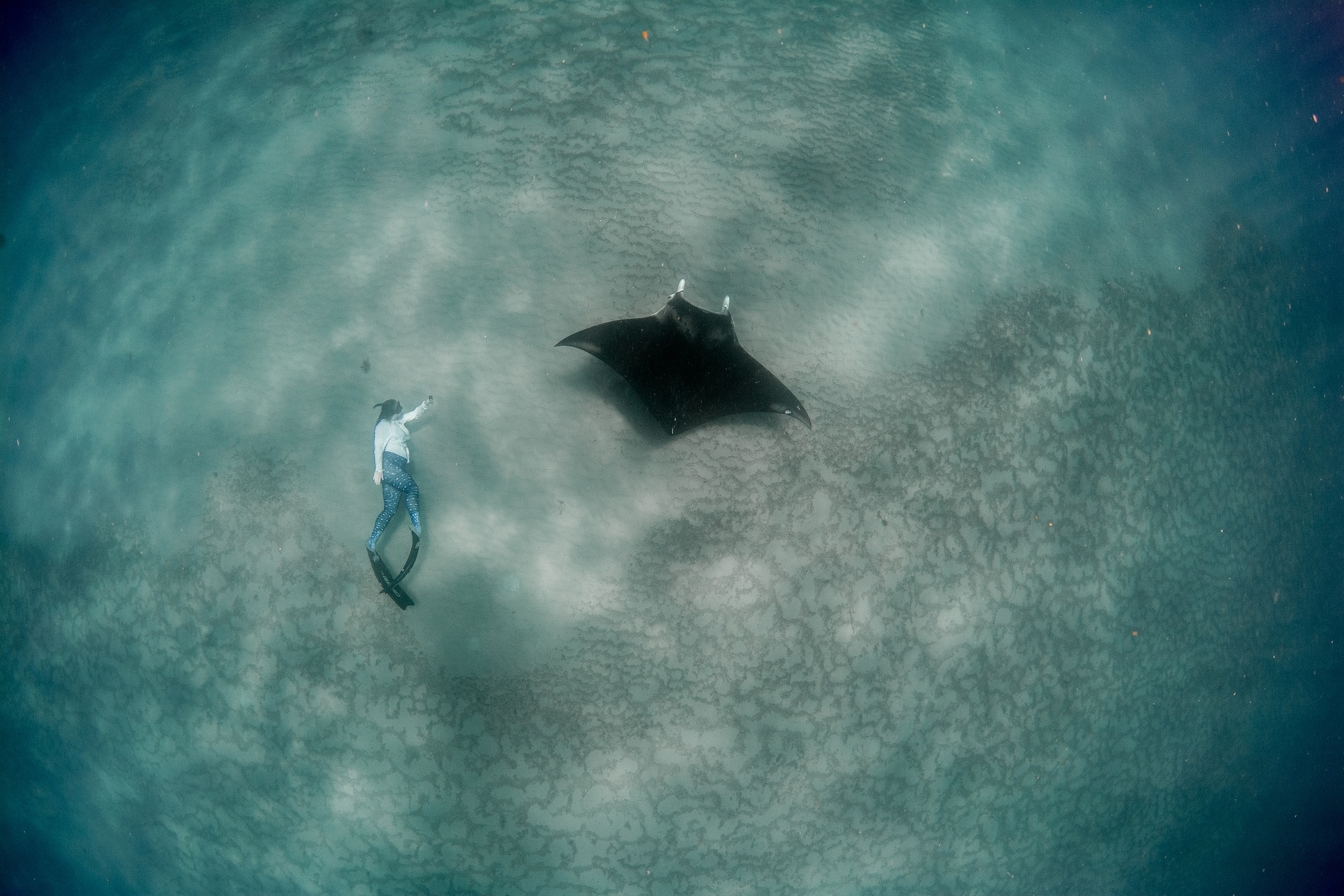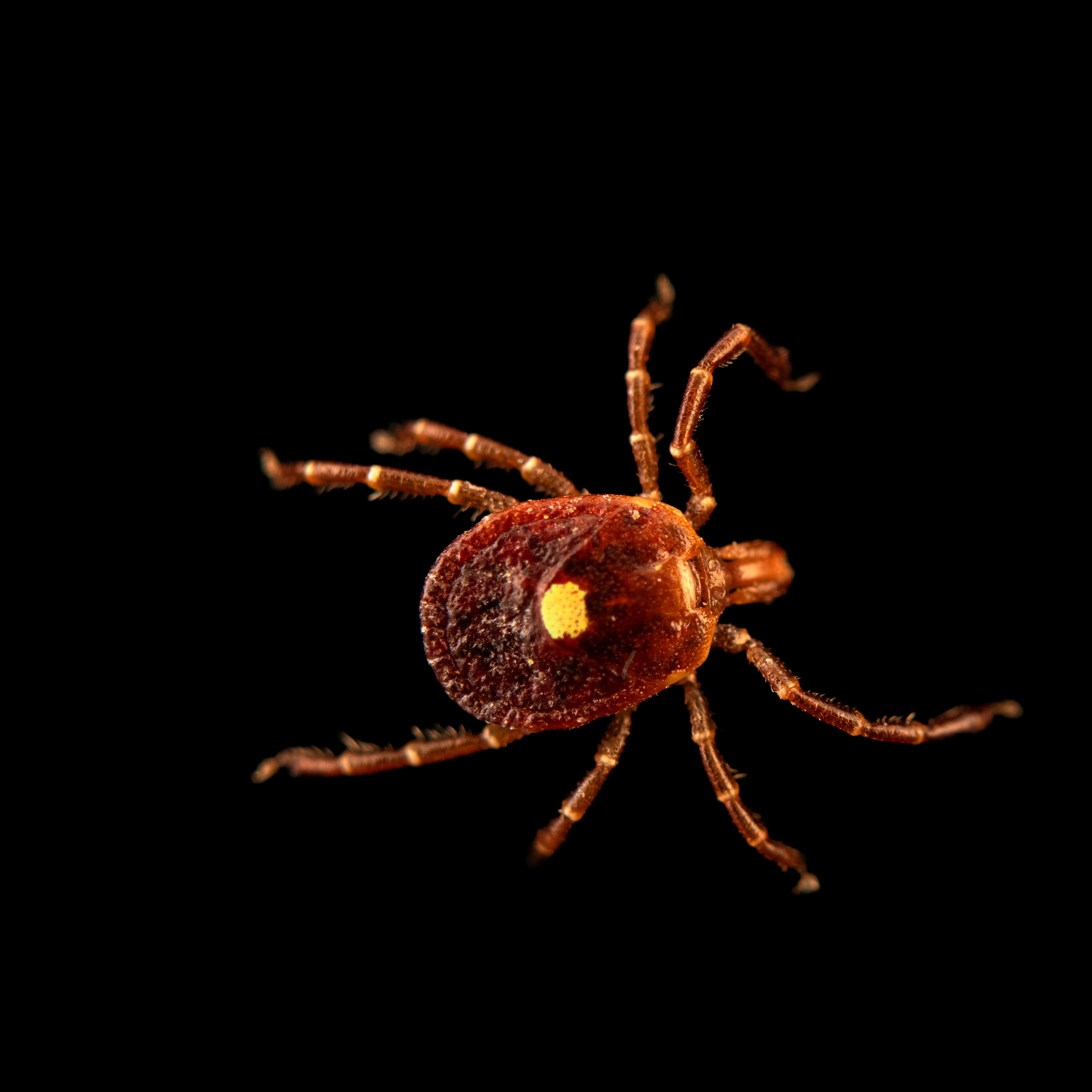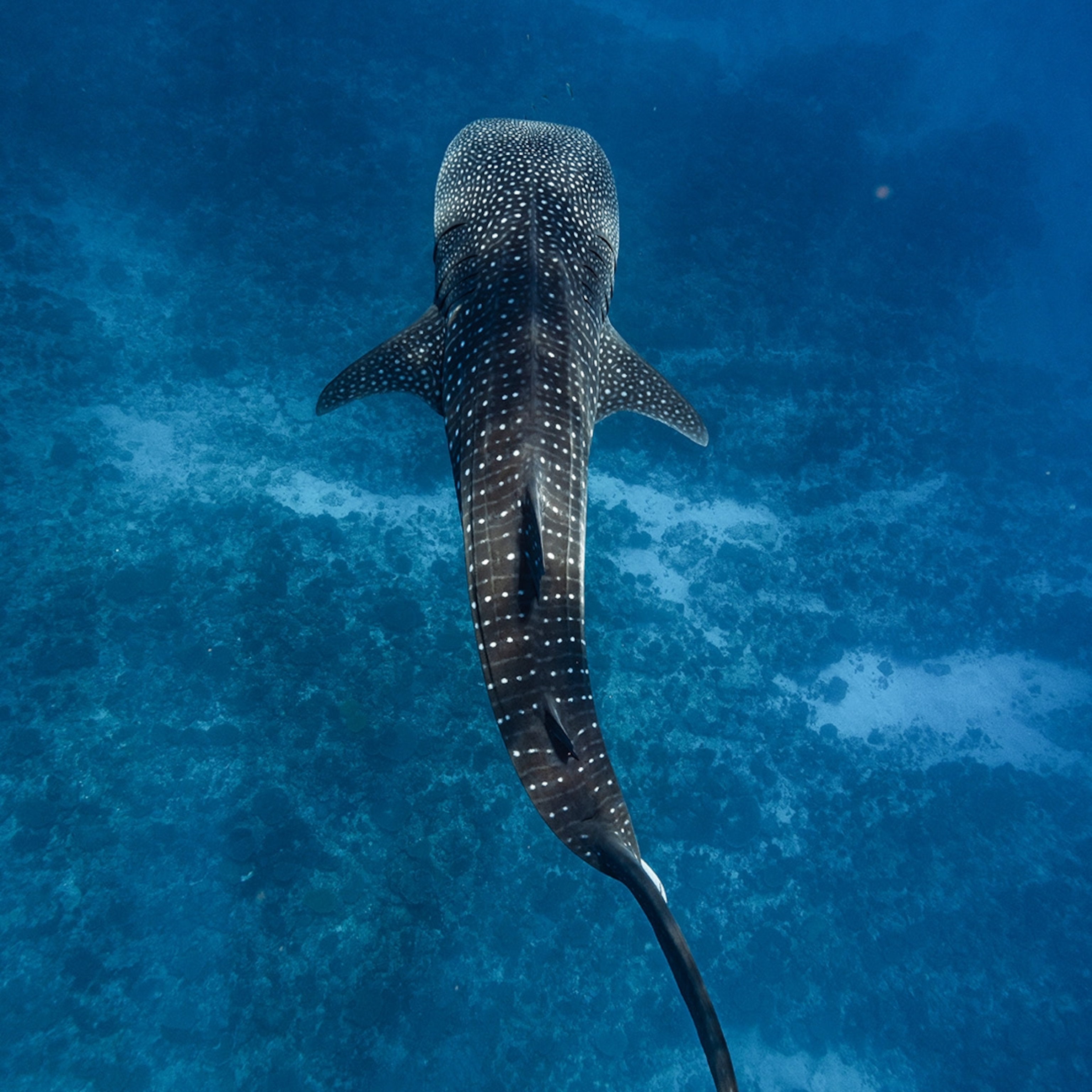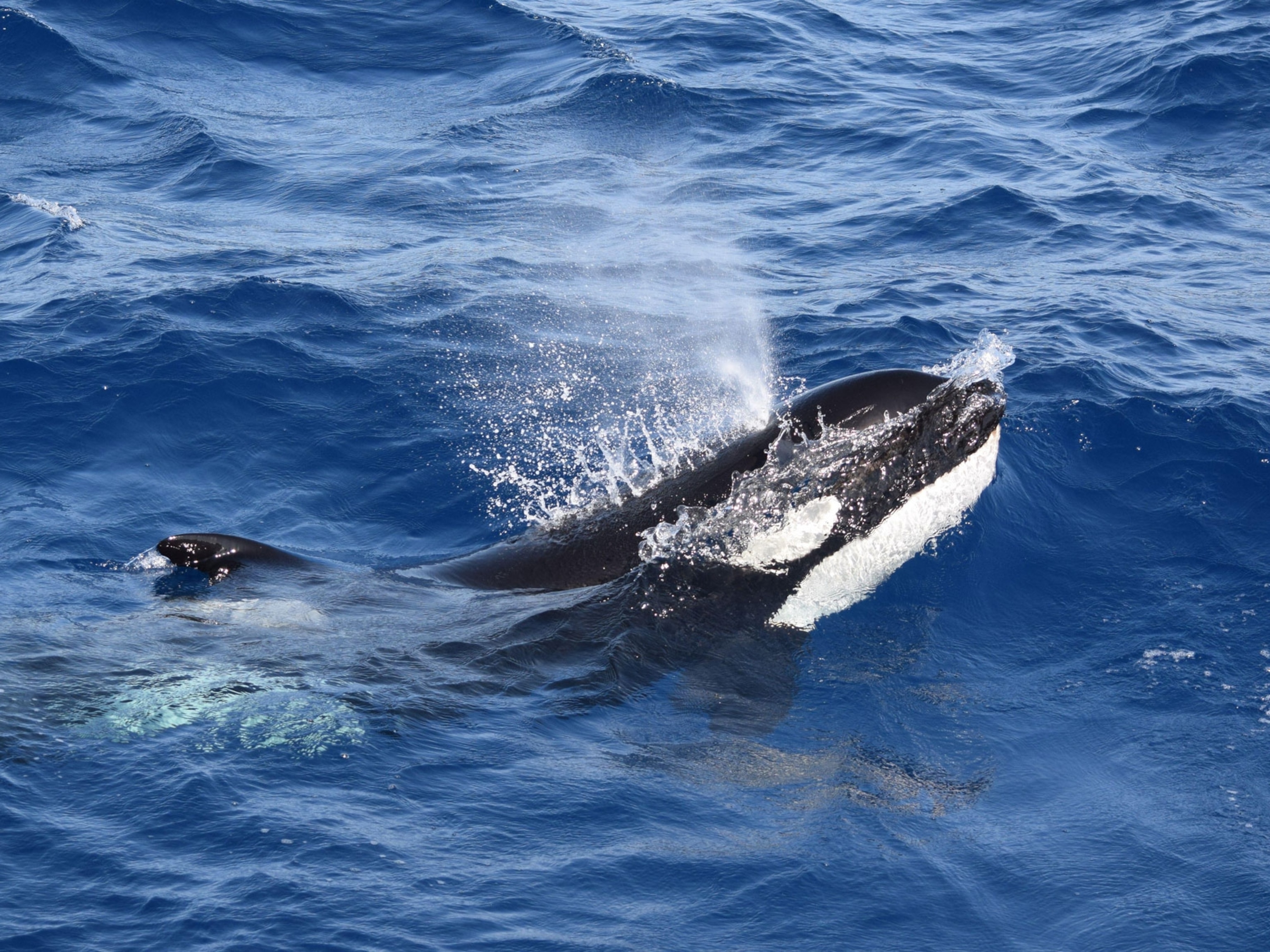Puttering up and down Juno Beach, Florida, atop an ATV, scanning the sand for endangered sea turtle tracks, Jessica Pate noticed a giant black shadow moving through the shallow water.
On closer inspection, she was shocked to discover a manta ray. An avid diver and biologist, Pate knew people who had swum with these huge fish in Indonesia or Hawaii—but never in the busy coastal waters of South Florida, which is home to more than six million people.
Intrigued by her encounter in 2010, Pate searched for scientific literature on the South Florida manta ray population, but found just one paper from 1998. So she set out to change that. (Read how manta rays form close friendships.)
For more than three years, from 2016 to 2019, Pate surveyed South Florida waters for the graceful swimmers, ultimately identifying 59 individuals, which the researchers have dubbed “urban mantas.”
“We have seen manta rays swimming in front of President Trump’s Mar-a-Lago and Jimmy Buffett’s Margaritaville resort,” Pate says, adding that high-rise condo residents in Miami have reported several manta ray sightings while at home during the pandemic.
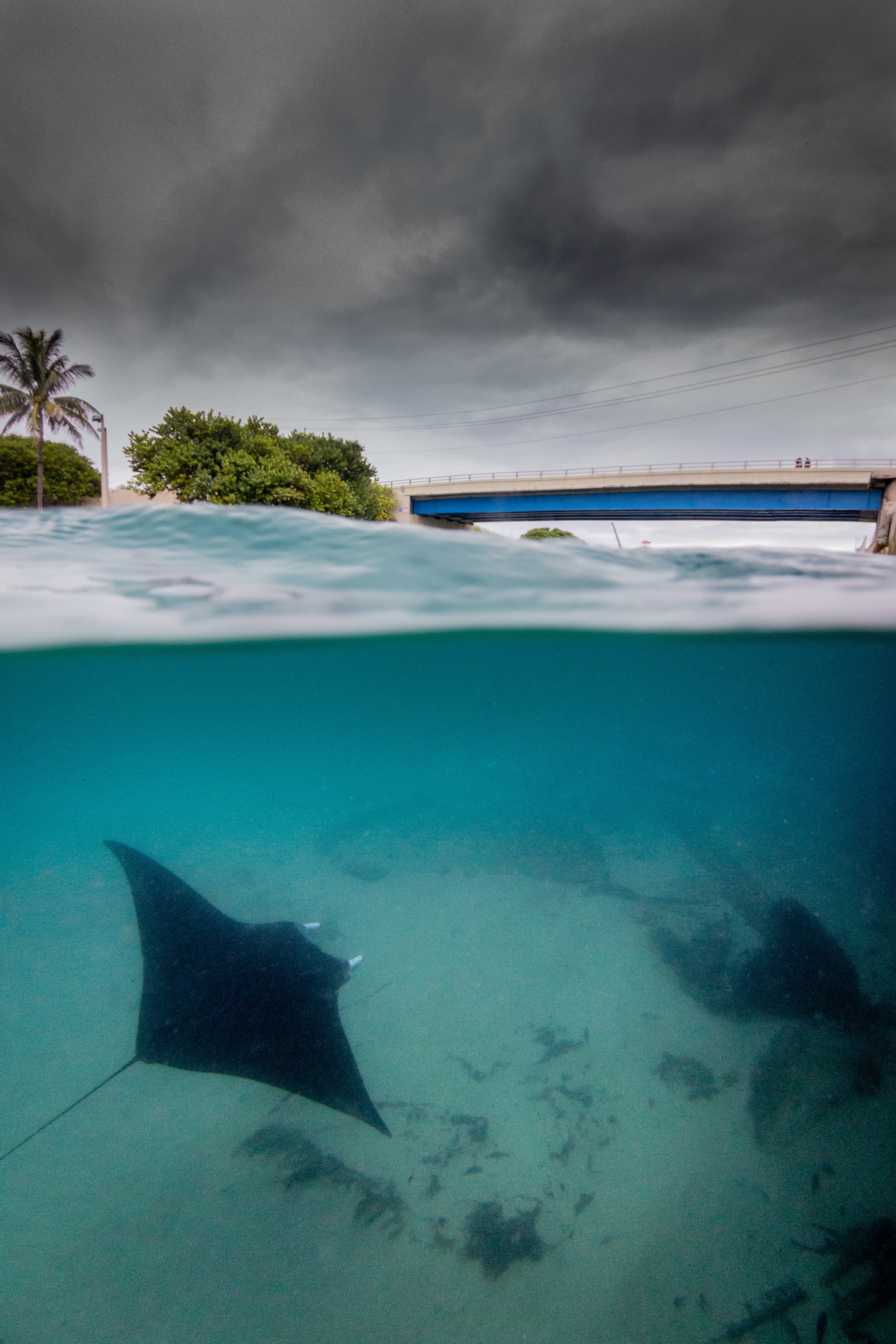
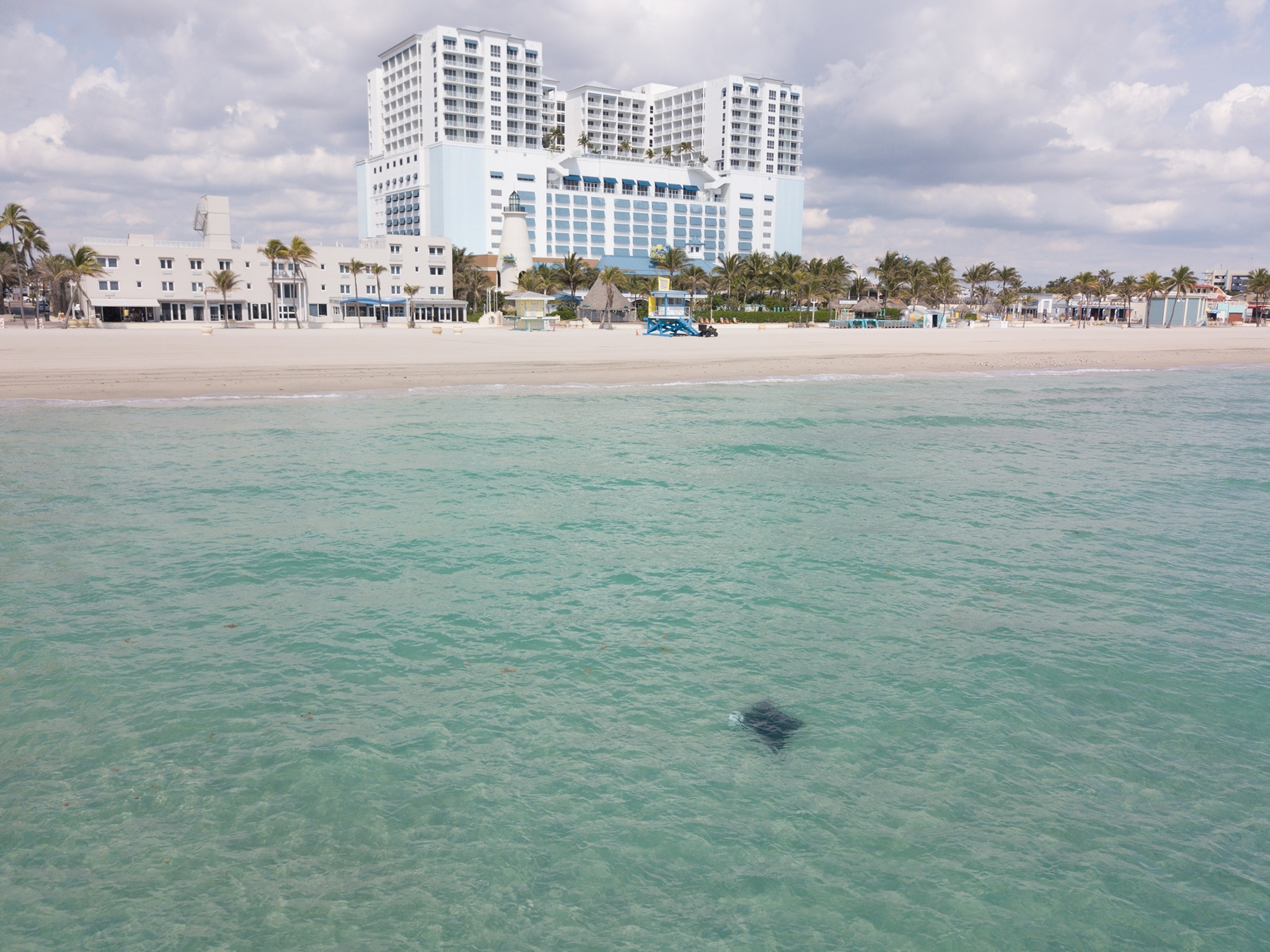
Beyond their cosmopolitan lifestyle, the Florida rays are notably almost all juveniles, based on the lack of mating scars on females and the small sizes of the males’ claspers, or genitalia.
In a new study, released this week in the journal Endangered Species Research, Pate and colleagues show strong evidence that South Florida has a nursery ground for manta rays—only the third ever found. Manta nurseries tend to be food-rich and relatively free from predators, allowing the young animals to safely grow. (Go inside the underwater world of manta rays with a National Geographic photographer.)

“It was amazing because it was an unexpected finding, and the other two nursery grounds were also just identified in 2018 and 2019,” in Indonesia and the Gulf of Mexico, says Pate, founder and lead scientist of the Florida Manta Project.
“There’s so little we know about mantas,” she adds, such as where they give birth, how long they live, how they choose mates. That's why newfound nursery may reveal more about this little-understood creature, and how to conserve it.
The International Union for Conservation of Nature considers both manta species, the giant manta ray (which can reach widths of 29 feet) and the reef manta ray as vulnerable to extinction. In 2018, the U.S. added the giant manta ray as a threatened species under the Endangered Species Act.
There is also genetic evidence, to be published in a forthcoming paper, that the Florida manta rays belong to a third, new species of manta ray, Pate adds.
“Right under our nose”
For her research, Pate borrowed her grandfather’s fishing boat and spent as many days as she could combing the shallow waters between Jupiter Island and Boynton Beach. Standing on the bow as the boat slowly motored along, Pate would look for large, dark shapes moving over the white sand.
“I can tell you that I’ve identified every single manta-shaped rock in South Florida,” she quips. Later, she also incorporated aerial photography from drones and small aircraft into her data.
She spotted a few of the 59 rays multiple times over the years, including one she and her colleagues named Stevie Nicks and a particularly omnipresent ray called Gillie, whom they spotted 23 times. (Learn why manta rays swim in mesmerizing circles.)
The unusually high number of young animals repeatedly seen in the same place indicates the presence of a nursery, says Pate. It’s also possible that South Florida’s warm, shallow water helps the young animals regulate their body temperatures and grow more quickly.
“In many areas where manta rays are studied, it is uncommon to see juvenile manta rays. It is very rare to see almost exclusively juveniles in one area, as we do in southeast Florida,” she says.
Even so, mantas can travel long distances, so the only way to confirm that a nursery exists in South Florida is to outfit juvenile mantas with satellite and acoustic tags, which Pate has begun in coordination with NOAA. (No one has ever seen a manta ray give birth in the wild, and their reproductive habits are largely a mystery.)
“This study confirms that we know so little about these animals,” adds Csilla Ari, a professor at the University of South Florida who also works with the Manta Pacific Research Foundation. “They are right under our nose in such an intensely populated area, and they still remained undetected for so long.”
Human conflicts
Joshua Stewart, a conservation ecologist and a National Geographic explorer who discovered the potential manta ray nursery site in the Gulf of Mexico, was also surprised by the potential nursery’s proximity to people.
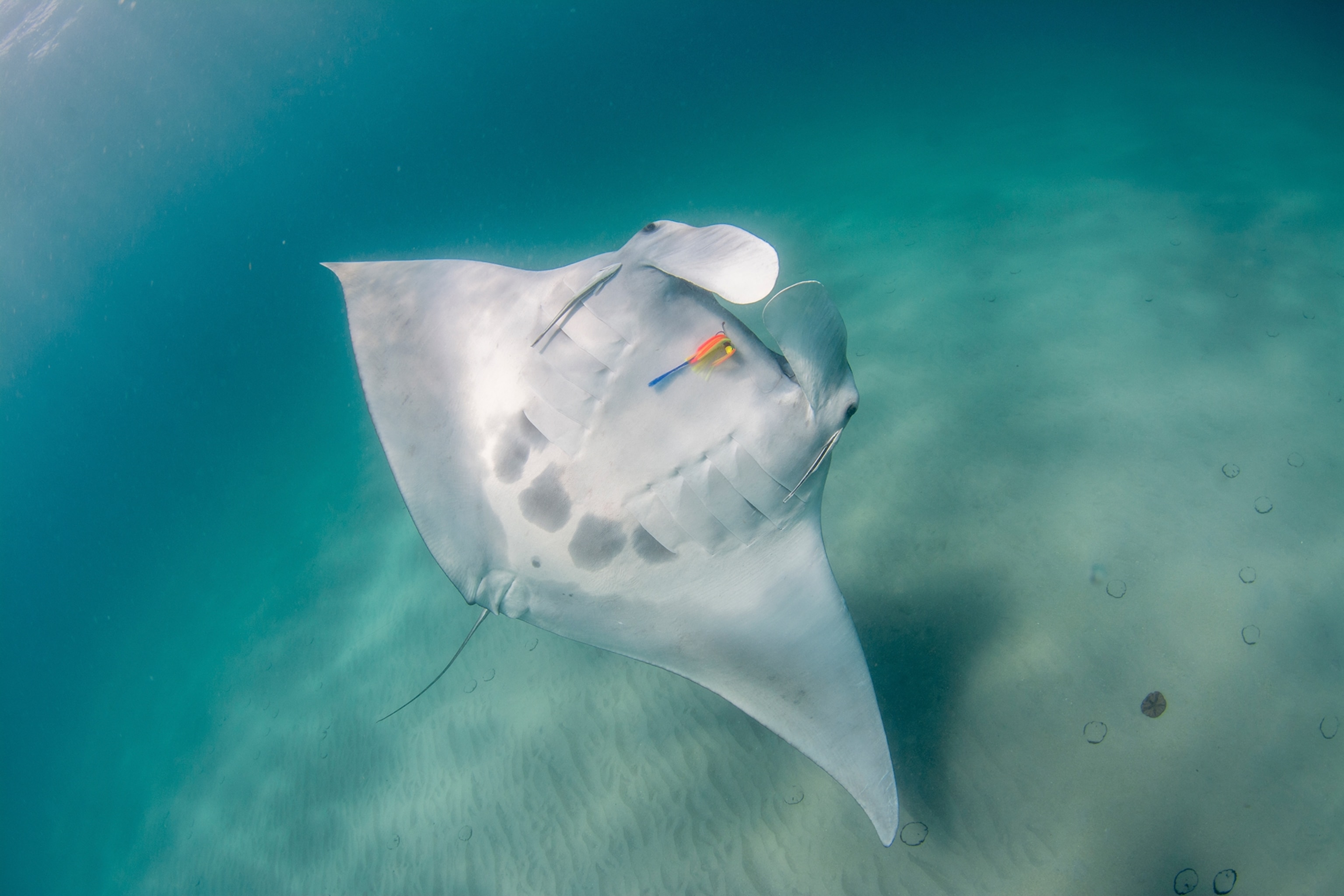
“We talk a lot about human impacts with mantas—and there’s certainly some evidence of that at the sites where I work,” says Stewart, an associate director at the Manta Trust. “But to see mantas swimming in Florida’s intercoastal channels, with huge yachts going by, was really shocking.” (See the best places to spot mantas in the wild.)
Florida residents hold the most recreational boat licenses in the U.S., which could explain why so many of Florida’s rays bear signs of human conflicts. Twenty-seven percent of the mantas studied had been entangled in fishing line, and 46 percent showed evidence of injury or scarring from boat propellers, fishing equipment, or other unidentified causes, according to Pate’s study.
Entanglement and overfishing are major threats to mantas, whose females don’t reach sexual maturity until 8 or 10 years old and reproduce slowly, giving birth to one or two pups every few years.
But once they reach adulthood, when they’re too big for most predators, manta rays generally do well—making it “really important for the viability of the entire population to protect these juveniles,” Pate says.
Given such vulnerabilities, she hopes that her study will eventually prompt the U.S. government to designate a critical habitat for rays in South Florida.
“These mantas are living in South Florida with millions of people, so protecting them won’t be easy,¨ Pate says. “But as manta rays around the world are declining, this could be a really important population to safeguard the species.”
